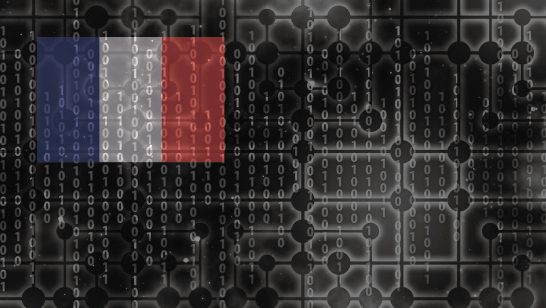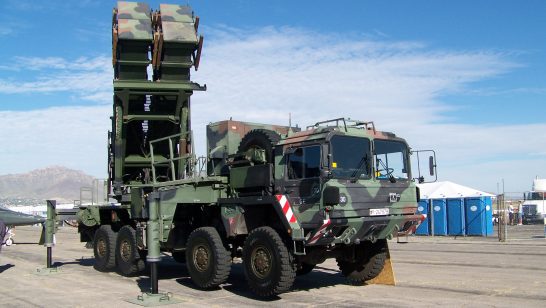
Signed by 190 out of the 195 countries of the world, the Treaty on the Non-Proliferation of Nuclear Weapons (NPT) has been the cornerstone of nuclear non-proliferation and arms control since 1970. This treaty encompasses non-proliferation obligations of states both with and without nuclear weapons, peaceful uses of nuclear energy, and the global application of nuclear safeguards, among other key commitments. However, the NPT also holds each of the parties of the treaty accountable to pursue good faith negotiations on cessation of the nuclear arms race and ultimately to nuclear disarmament. Thorough and effective verification measures are critical to the success of nuclear disarmament, and initiatives like the International Partnership for Nuclear Disarmament Verification (IPNDV) are working to identify and address the challenges associated with verifiable dismantlement of nuclear warheads by developing potential nuclear disarmament verification procedures and technologies.
To fulfill current arms control agreements, the United States and the Russian Federation count delivery systems as a means of ensuring that the terms of the agreements are being met. Dismantlement of the nuclear warheads themselves is not yet captured in such agreements due to the highly sensitive nature of warhead design and the implicit proliferation challenges such an endeavor could present if done incorrectly. The IPNDV is actively working to address this gap and the challenges associated with it that exist in the world of nuclear disarmament verification, while successfully managing safety, security, and nonproliferation concerns.
The IPNDV was born out of independent efforts and recommendations from the U.S. Department of State and a pilot project run by NTI, both of which advocated for the convening of an international group of experts to investigate technical and procedural challenges and solutions associated with nuclear disarmament verification and monitoring. The U.S. Department of State officially announced in December 2014 that the U.S. Government would lead the IPNDV in cooperation with NTI. The first meeting of the Partnership was hosted in Washington, D.C., in March 2015.
Over the past five years, the IPNDV has grown to include more than 25 states, both with and without nuclear weapons, which have come together to identify critical gaps and technical challenges associated with monitoring and verifying nuclear disarmament. Over the course of two multi-year phases of work, working groups have addressed the topics of: (1) Monitoring and Verification Objectives, (2) On-Site Inspections, (3) Technical Challenges and Solutions, (4) Verification of Nuclear Weapons Declarations, (5) Verification of Reductions, and (6) Technologies for Verification.
The first phase of the Partnership’s work addressed one of the most important, complex, and challenging topics related to future arms control reductions – monitoring and verifying the physical dismantlement of a nuclear weapon, which is just one element of a broader disarmament process. After producing a detailed 14-step dismantlement process, along with more than 40 reports and papers describing these processes, technologies, and actions, the Partnership arrived at its Key Judgment that, “While tough challenges remain, potentially applicable technologies, information barriers, and inspection procedures provide a path forward that should make possible multilaterally monitored nuclear warhead dismantlement while successfully managing safety, security, non-proliferation, and classification concerns in a future nuclear disarmament agreement.” In other words, multilateral monitored dismantlement should be possible while also addressing critical safety, security and nonproliferation requirements, therefore fulfilling the obligations of the NPT’s Article VI without violating Articles I and II.
With this Key Judgment in mind, the Partnership moved into its second phase of work in early 2018, which has largely focused on how to verify nuclear weapons declarations and reductions, as well as identifying and demonstrating a select number of key verification technologies identified in Phase I. As a major leap forward in both the IPNDV’s technical work as well as its contribution towards NPT disarmament goals, Phase II marked a concrete move from “paper to practice.” Five practical exercises and technology demonstrations covered topics such as: the cross-cutting elements within the IPNDV’s dismantlement framework; chain-of-custody concepts and how they can be applied to notional nuclear warhead materials during and after dismantlement; detecting the presence (or absence) of high explosives; verifying the separation of fissile material and high explosives from a nuclear weapon; and confirming the presence or absence of Special Nuclear Materials in a container.
These exercises and technology demonstrations not only highlight the progress that the Partnership has made, but also allow the Partners to more accurately gauge what work remains to be done. They have shown that it is possible for states both with and without nuclear weapons to plan, conduct, and learn from these practical activities while respecting non-proliferation, safety, and security obligations, as well as other national security constraints.
States with nuclear weapons have extensive experience with dismantling warheads, having done so many times over several decades to fulfill arms control obligations or to modernize their forces. However, dismantling warheads in a way that is verifiable and provides confidence that the Article VI obligations of the NPT are being met is significantly more challenging. The work of the IPNDV is actively demonstrating that doing so, while challenging, is possible. Although the IPNDV does not operate in service of any specific current or future arms control agreement, as the 50th Anniversary of the NPT approaches, the Partnership is demonstrating meaningful progress towards a world without nuclear weapons.
The greatest strength of the IPNDV is the diverse and extensive expertise brought by each of the partners. We encourage those interested in the work of the Partnership who would like more information to reach out to [email protected]
The opinions articulated above represent the views of the author, and do not necessarily reflect the position of the European Leadership Network (ELN) or any of the ELN’s members. The ELN’s aim is to encourage debates that will help develop Europe’s capacity to address pressing foreign, defence, and security challenges.
Image: Working Groups Meeting of the IPNDV, Flickr



